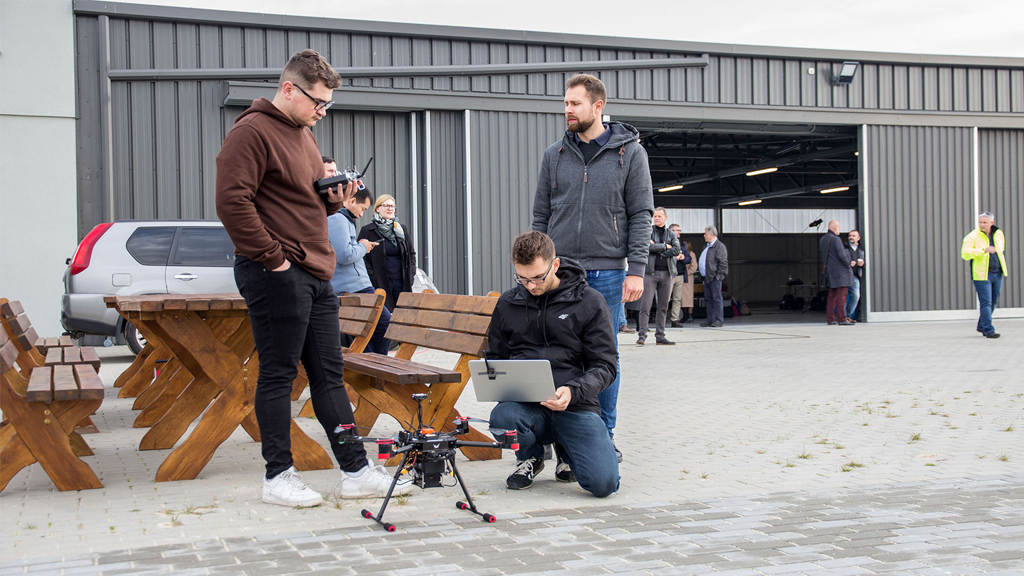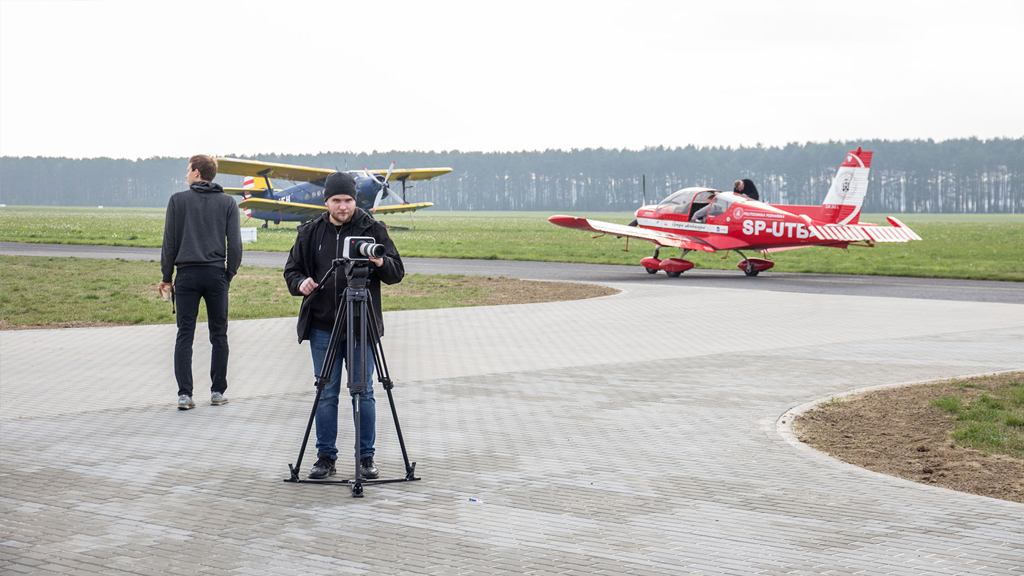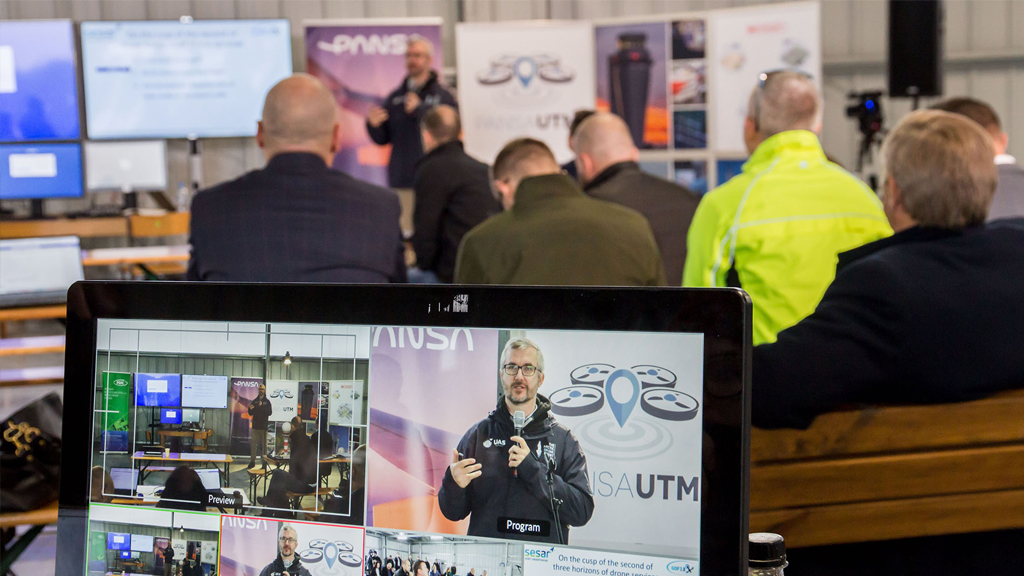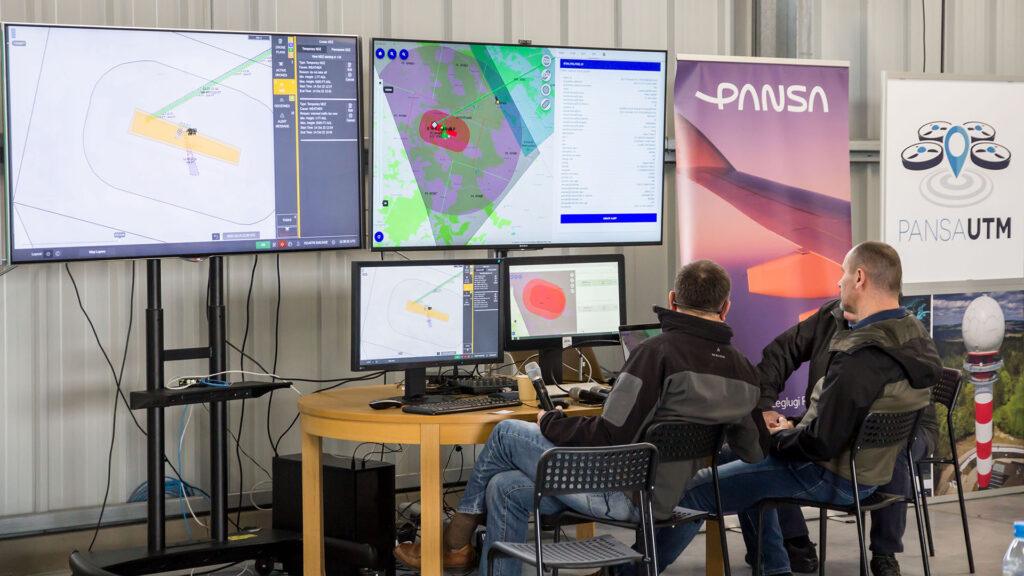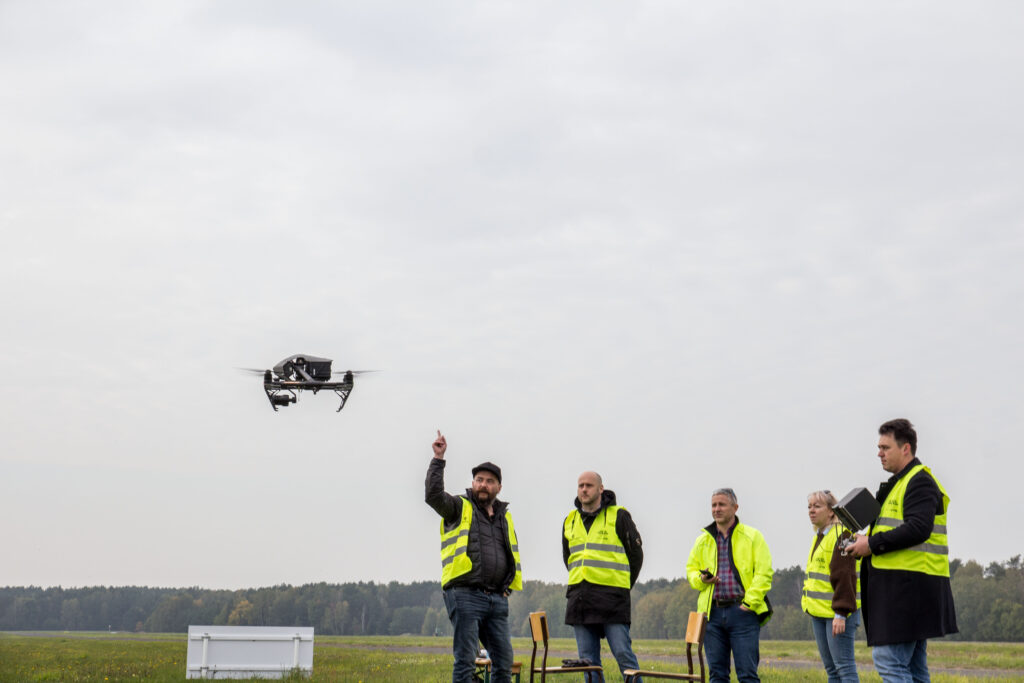Representatives of the project's consortium partners arrived in Kąkolewo, where after final tests and integration, they carried out individually assigned missions. These missions simulated real-world recreational and service drone flights that are expected to take place in cities over the next decade, such as mapping, monitoring, tourist flights, cargo transport, and even passenger transport via air taxis.
“Although there wasn't a real air taxi in Kąkolewo, we did have a military-grade drone with capabilities for observation and target tracking," says Piotr Szymaniak, coordinator of the PSNC Aerospace Lab. "The meeting allowed for a full practical test of conducting unmanned flights in high-density areas, beyond the visual line of sight, with volume reservations of airspace and its automatic division into segments. In the simulated flight management center, the situation with the current positions of the drones was displayed. The airspace was divided into zones managed by various Responsibility Centers, and missions crossing multiple zones had to receive approvals from all airspace managers. Controllers also conducted a test closure of part of the airspace due to an unscheduled flight by the Air Rescue Service, portrayed by a Cessna from the Poznań Aeroclub."
Friday was designated as an Open Day, during which, in addition to consortium representatives, many invited guests from the drone industry, local government officials, and figures from the business and academic world visited Kąkolewo. They had the opportunity to witness the operation of a modern UTM (Unmanned Traffic Management) system, whose framework is ahead of current legal and factual standards for U-space. Thanks to projects like GOF 2.0, dense drone missions over cities will soon become part of our everyday reality.
